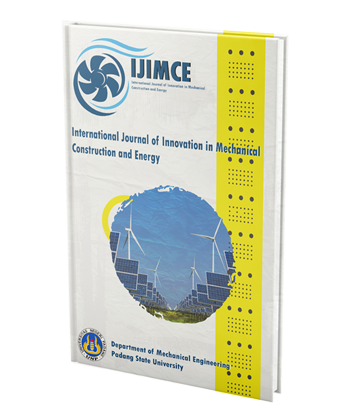Stability Analysis of Clay Soil Plus Sand, Cement and DIFA Soil Stabilizer Additives Using Unconfined Compressive Strength (UCS) Testing
Keywords:
Density, free compressive strength, difa soil stabilizer, sand, cementAbstract
Tanjung pinang City is located in Riau Islands Province, has coral and kelanauan or kelempungan soil types, but in its implementation there is one location point along 50 meters where the subgrade does not reach the minimum standard density. The purpose of the study was to determine the value of soil density in the form of maximum dry weight and free compressive strength values obtained after a mixture variation of sand, cement and DIFA Soil Stabilizer. The research was conducted using experimental method of laboratory testing. Soil stabilization by mixing native soil plus sand, cement and DIFA soil stabilizer. The compositions carried out were native soil plus sand at 0%, 10%, 20% of the dry weight of the soil, cement 8% of the dry weight of soil and sand weight, and DIFA soil stabilizer 2% of the weight of cement. The testing methods were standard proctor and UCS tests to obtain the density value and free compressive strength value of the stabilized soil. The soil density value based on the standard proctor test is the dry weight value of native soil of 1,410 kg/m3, soil mixture plus 0% sand and 8% cement of 1,450 kg/m3, mixture of 10% sand and 8% cement of 1,470 kg/m3, and mixture of 20% sand and 8% cement of 1,490 kg/m3. The UCS test result of the original soil was 291.50 kN/m2. The test result of mixed soil with 0% sand, 8% cement and 2% DIFA soil stabilizer was 991.25 kN/m2. The test result of mixed soil with 10% sand, 8% cement and 2% DIFA soil stabilizer was 1,241.59 kN/m2. The test result of mixed soil with 20% sand, 8% cement and 2% DIFA soil stabilizer was 1,743.63 kN/m2.
Downloads
References
Rahmadani, N. (2023). Analisis Stabilisasi Tanah Tempatan Menggunakan Semen Ditambah Additif DIFA Soil Stabilizer Di Kota Tanjungpinang Provinsi Kepulauan Riau.
Darwis, H. (2017). Dasar-Dasar Teknik Perbaikan Tanah.
PT. DIFA MAHAKARYA. (2020). Profile Product. www.difa.co
Pekerjaan Umum. (1994). SNI 03-3438-1994 Tata Cara Pembuatan Rencana Stabilisasi Tanah Dengan Semen Portland Untuk Jalan.
Dapertemen ASTM D 2166 - 00. (2000). Standard Test Method for Unconfined Compressive Strength of Cohesive Soil.
Hardiyatmo, H. C. (2002). Mekanika Tanah 1. GADJAH MADA UNIVERSITY PRESS.
Journal Articles from the Internet
ASTM D 2487 - 00. (2000). Standard Practice for Classification of Soils for Engineering Purposes (Unified Soil Classification System).
Badan Standarisasi Nasional. (2008). SNI 1743:2008 Standar Nasional Indonesia Cara Uji Kepadatan Berat Untuk Tanah
Badan Standarisasi Nasional. (2008). SNI 1743:2008 Standar Nasional Indonesia Cara Uji Kepadatan Berat Untuk Tanah.
ASTM D 2216 - 98. (1998). Standard Test Method for Laboratory Determination of Water (Moisture) Content of Soil and Rock by Mass. www.astm.org
Dapertemen Pekerjaan Umum. (2010). Perencanaan Stabilisasi Tanah Dengan Bahan Serbuk Pengikat Untuk Konstruksi Jalan.
Badan Standarisasi Nasional. (2012). SNI 3638:2012 Standar Nasional Indonesia Metode Uji Kuat Tekan-Bebas Tanah Kohesif. www.bsn.go.id




